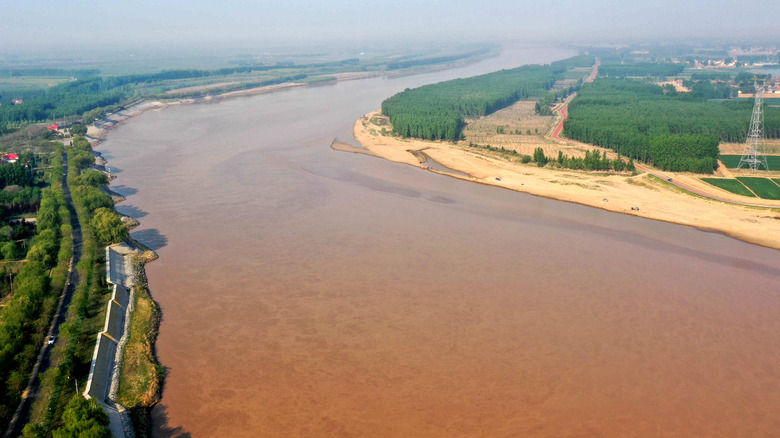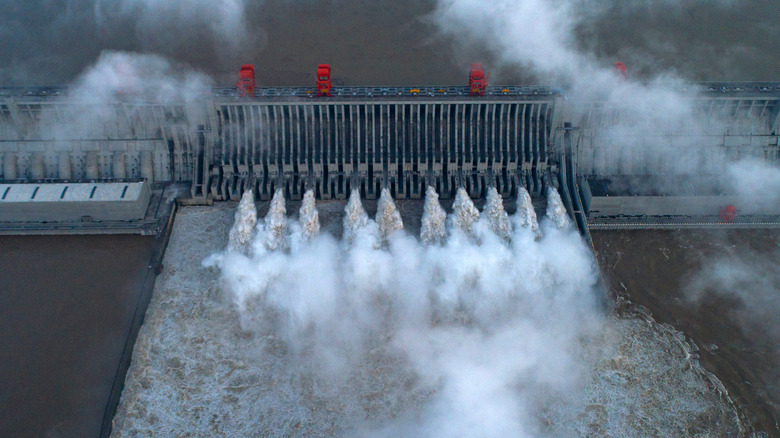The Truth About The Deadly 1887 Yellow River Flood
The Yellow River is one of the most well-known and frequently visited rivers in China, but nearly 150 years ago, it was the source of the world's deadliest natural disaster at the time (via Live Science). The river was controlled and restrained through a series of dikes and dams that guided the river through the farmland but left the water level dangerously high compared to the lowlands. During the 1880s, the dikes filled up with silt, gradually raising the water level even further until things came to a head in 1887 when heavy rainfall triggered the flood.
The valley below the Yellow River was flooded with a deluge of water that covered a whopping 5000 square miles of land — an area bigger than the size of Connecticut (via State Symbols USA). The massive flood destroyed both farmland and lives on a tragically large scale. While no official, certified death toll exists, estimates suggest that 900,000 to 2 million people were lost to the flood.
The river is closely monitored today
The Yellow River, which is over 3000 miles long, is the deadliest river in the world because of its knack for flooding its surrounding plains. Before the 1887 flood, Chinese farmers had been building dikes for centuries in hopes of avoiding catastrophes, such as deluges that would claim the lives of millions (via Encyclopedia of Disasters). Eventually, silt was deposited in the slower areas of the river, and it overflowed in the Henan province. The water destroyed countless cities and villages and the land was buried under a pile of mud. The resulting landscape was said to more closely resemble the Sahara rather than the fertile farmland that previously stood.
At the time, there was very little organization within the Chinese government in dealing with emergencies — particularly one on the scale of the 1887 flood. Missionaries only had meager food supplies to hand out to the thousands of starving survivors, and disease broke out as well. Repairs to the dikes took two years of grueling and often fatal hard labor. Today, the Yellow River is guarded by an intricate series of dams with controlled releases of water to prevent another catastrophe like the 1887 flood and the ones that followed in the early 20th century.

